Bettersize Instruments created the BeNano Series, the most recent generation of nanoparticle size and zeta potential analyzers. The system employs dynamic light scattering (DLS), electrophoretic light scattering (ELS), and static light scattering (SLS) to deliver precise measurements of particle size, zeta potential, and molecular weight.
The BeNano Series is widely used in academic and manufacturing processes of various fields, including but not limited to chemical engineering, pharmaceuticals, food and beverage, inks and pigments, and life science, etc.
Features and Benefits
- Automatic adjustment of laser intensity
- APD (Avalanche Photodiode) detector providing exceptional sensitivity
- Compliance with 21 CFR Part 11, ISO 22412, ISO 13099
- DLS backscattering (173°) detection technology
- Intelligent algorithm of result evaluation
- Minimum sample volume: 3μL
- PALS (Phase Analysis Light Scattering) technology
- Programmable temperature control system
- Size range: 0.3nm - 15μm
- User-adjustable scattering volume for concentrated samples
BeNano Series: Unveiling the Secrets of Nanoparticle Analysis
Video Credit: Bettersize Instruments Ltd.
Overview
Features
Unlock Greater Research Potential with BeNano
- Advanced ELS Technology (PALS): PALS technology can successfully distinguish and extract electrophoretic behavior, even from samples with low electrophoretic mobilities, whether close to the isoelectric point or in a high saline environment.
- Advanced DLS Technology: Backscattering Detection: Backscattering DLS optics can detect far greater scattering volumes than 90-degree optics. Backscattering DLS, when combined with a flexible measurement position, provides significantly increased sensitivity and sample measurement capacity.
- Temperature Trend Measurement: A programmed SOP makes it simple to execute a temperature trend on thermal-sensitive samples. The BeNano can detect the temperature transition point of size results, which corresponds to protein sample aggregation temperature.
- Stable and Durable Optical Bench: The BeNano uses a 50 mW solid-state laser, a single-mode fiber system, and a high-performance APD detector to provide reliable, wide-ranging, and highly redundant detection capabilities.
- Research Level Software: The BeNano software can intelligently assess and process scattered light signals, resulting in higher signal quality and stability. Various built-in calculating modes can be used for a wide range of scientific studies and applications.
- Ultra-Low Sample Volume Required: Measuring trace amounts of samples is necessary for early-stage R&D in the pharmaceutical industry and academia. The capillary sizing cell requires just 3 to 5 μL of material for accurate size measurements.
Source: Bettersize Instruments Ltd.
| Model |
Technology |
Key Function |
| |
90° DLS
& SLS |
173° DLS
& SLS |
12° ELS
& PALS |
Particle
size |
Zeta
potential |
Molecular
weight |
Rheological
properties |
| BeNano 180 Zeta Pro |
√ |
√ |
√ |
√ |
√ |
√ |
√ |
| BeNano 180 Zeta |
|
√ |
√ |
√ |
√ |
√ |
√ |
| BeNano 90 Zeta |
√ |
|
√ |
√ |
√ |
√ |
√ |
| BeNano Zeta |
|
|
√ |
|
√ |
|
|
| BeNano 180 Pro |
√ |
√ |
|
√ |
|
√ |
√ |
| BeNano 180 |
|
√ |
|
√ |
|
√ |
√ |
| BeNano 90 |
√ |
|
|
√ |
|
√ |
√ |
1. Particle Size Measured by Dynamic Light Scattering (DLS)
Dynamic light scattering (DLS), also known as photon correlation spectroscopy (PCS) or quasi-elastic light scattering (QELS), is a method for measuring Brownian motion in a dispersant. It is based on the fact that smaller particles travel faster and larger particles move slower.
An avalanche photodiode (APD) detects the particle scattering intensities, which are subsequently transformed into a correlation function using a correlator. The diffusion coefficient (D) can be calculated using a mathematical algorithm based on the correlation function.

The Stokes-Einstein equation, which connects the diffusion coefficient to particle size, can be used to compute the hydrodynamic diameter (DH) and distribution.

Image Credit: Bettersize Instruments Ltd.
2. Backscattering Detection Technology
Features
- Wider Concentration Range: By adjusting the detection position, extremely concentrated samples can be detected near the sample cell’s edge, thereby reducing the effect of multiple light scattering.
- Higher Sensitivity: When compared to the standard 90° optical design, the scattering volume is 8-10 times larger, and the sensitivity is approximately ten times higher.
- Higher Size Upper Limit: It minimizes multiple light scattering from big particles and, to some extent, the number fluctuations of large particles caused by the considerably larger scattering volume.
- Better Reproducibility: Better reproducibility is offered by the DLS backscattering technique, which is less affected by dust contaminants and unevenly distributed agglomerates.
Intelligent Search for the Optimal Detection Position
- The software automatically finds the ideal detection location based on the sample’s size, concentration, and scattering ability to obtain the maximum measurement accuracy while also offering flexibility in detecting varied types and concentrations. This capability is very beneficial when working with a diverse range of samples, each with its own scattering characteristics and concentrations.

Image Credit: Bettersize Instruments Ltd.
3. Zeta Potential Measured by Electrophoretic Light Scattering (ELS)
Counterions surround charged particles in aqueous environments, forming an inner Stern layer and an outer shear layer. Zeta potential refers to the electrical potential at the shear layer interface.
A higher zeta potential means that the suspension system is more stable and less likely to aggregate. Electrophoretic light scattering (ELS) analyzes electrophoretic mobility using Doppler changes in scattered light, which can then be utilized to calculate a sample’s zeta potential using Henry’s equation.


Image Credit: Bettersize Instruments Ltd.
4. Phase Analysis Light Scattering (PALS)
Phase analysis light scattering (PALS) is an advanced technology based on the traditional ELS technology, which has been further developed by Bettersize to measure the zeta potential and its distribution of a sample.
Features and Benefits
- Accurate measurement of samples with low electrophoretic mobility
- Effectively measures the zeta potential of particles whose charge approaches the isoelectric point zeta potential distribution
- Effective for samples in organic solvents with low dielectric constant
- More accurate results for samples with high conductivity

Image Credit: Bettersize Instruments Ltd.
5. Static Light Scattering
Static light scattering (SLS) is a technique that assesses the scattering intensities, weight-average molecular weight (Mw), and second virial coefficient (A2) of a sample using the Rayleigh equation:

where c is the concentration of the sample, θ is the angle of detection, Rθ is the Rayleigh ratio (used to characterize the intensity ratio between the incident light and the scattered light at angle θ), A2 is the second virial coefficient, K is a constant associated with (dn/dc)2.
Scattering intensities of the sample at various concentrations are observed during molecular weight measurements. Samples at various concentrations have their Rayleigh ratios calculated and plotted onto a Debye plot using the scattering intensity and Rayleigh ratio of a recognized standard (like toluene). The intercept and slope from the linear regression of the Debye plot are then used to get the molecular weight and the second virial coefficient.


Image Credit: Bettersize Instruments Ltd.
6. Microrheology Measured by DLS
Dynamic Light Scattering Microrheology (DLS Microrheology) is a cost-effective and efficient technique that leverages dynamic light scattering to assess rheological properties. Through the analysis of Brownian motion in colloidal tracer particles, crucial data on the system's viscoelastic properties, including viscoelastic modulus, complex viscosity, and creep compliance, can be derived using the generalized Stokes-Einstein equation.

Features and Benefits
- Applies low stress to tracer particles
- Complements mechanical rheology results
- Investigate rheological behaviors by measuring the thermally-driven motion of tracer particles within a material being studied
- Facilitates the measurement across a wide range of frequencies
- Only requires a microliter-scale sample volume
- Suitable for weakly-structured samples
7. Temperature Trend Measurement
- Measurement Parameters
- Size vs. Temperature
- Zeta Potential vs. Temperature
- Features
- Benefit protein formulation stability study
- Increases the rate of aging in real-time by simulating high temperatures
- Benefits
- Simple analysis of the stability of protein formulation
- Increases the rate of aging in real-time by simulating high temperatures
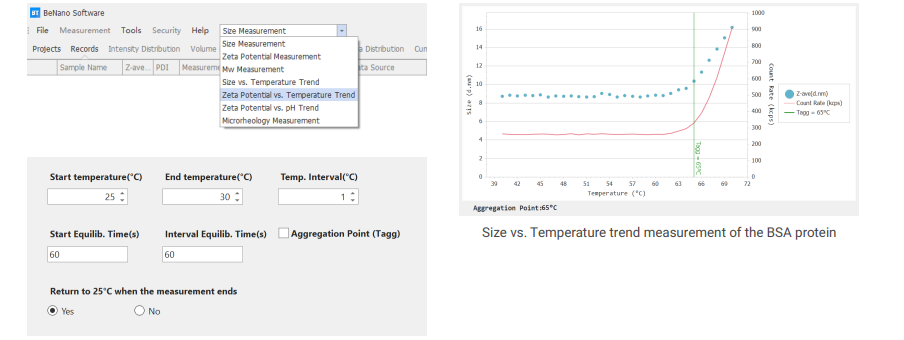
Image Credit: Bettersize Instruments Ltd.
8. pH Trend Measurement
- Measurement Parameters
- Zeta Potential vs. pH
- Isoelectric point
- Conductivity vs. pH
- Features
- High-precision ternary titration pumps
- Peristaltic pump that can be controlled and has a large capacity and rate of flow
- General-purpose electrode
- Automated titrant selection based on initial and target pH using intelligent software
- Benefits
- Completes measurements in less time
- Improves uniformity and reproducibility of results
- Minimize the workload of researchers
- Simplifies qualifications needed for operators
- Accelerates real-time aging through elevated temperature simulation
- Minimizes exposure to corrosive liquids

Image Credit: Bettersize Instruments Ltd.
9. A Research Level Software
- Automatic calculation of mean and standard deviation for results and statistics
- Comparison of results from multiple runs through statistics and overlay functions
- Free lifelong upgrades provided
- Over 100 available parameters that meet the research, QA, QC, and production needs
- Real-time display of information and results
- SOP guarantees measurement accuracy and completeness
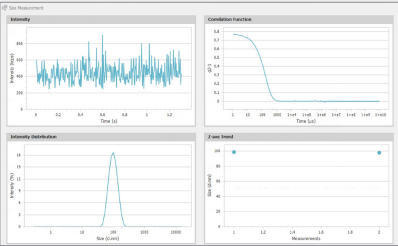
Image Credit: Bettersize Instruments Ltd.
10. Compliance With FDA 21 CFR Part 11
The BeNano software system adheres to 21 CFR Part 11 regulations, ensuring restricted access to authorized individuals via a username and password system for electronic record signing, access logs, change logs, and operation execution.
An activation code facilitates the enhancement of security settings to ensure compliance, while an "audit trail" feature enables the monitoring of system security and data integrity to guarantee proper management and maintenance.
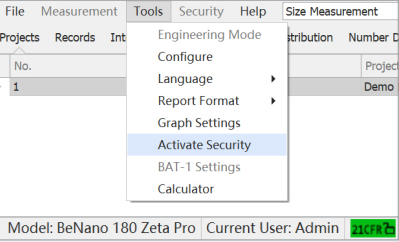
Image Credit: Bettersize Instruments Ltd.
Technology
Source: Bettersize Instruments Ltd.
| Dynamic Light Scattering (DLS) - Applications |
Electrophoretic Light Scattering (ELS) - Applications |
Static Light
Scattering (SLS) -
Applications |
DLS Microrheology - Applications
|
|
1) Particle size and distribution of polymers, colloids, biomacromolecules, etc.
2) Research on thermal-sensitive systems, such as PNIPAm polymer.
3) Studies on polymerization process and reaction mechanisms.
4) Kinetics analysis of self-assembly, polymerization and depolymerization, etc.
|
1) Particle suspensions, including colloids, proteins, nanometals, etc.
2) Industries such as chemicals, biology, water treatment, paints, etc.
3) Product stability control and monitoring
4) Stability research and control of suspension system
5) Surface property and modification study
|
1) Chemical engineering:
characterization of polymers, micelles and macromolecules
2) Life science:
characterization of proteins, polypeptides, and polysaccharides.
3) Pharmaceuticals:
research on aggregation and stability of drugs and biomacromolecules.
|
1) Polymer solution
2) Protein solution
3) Gel system
|
 |
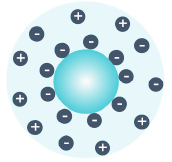 |
 |
 |
Specification
Source: Bettersize Instruments Ltd.
| Functions |
Parameter |
BeNano 180 Zeta Pro |
BeNano 180 Zeta |
BeNano 90 Zeta |
BeNano
Zeta |
BeNano 180 Pro |
BeNano
180 |
BeNano
90 |
Size
measurement |
Size
measurement range
|
0.3 nm - 15 μm*
|
0.3 nm - 10 μm*
|
0.3 nm - 15 μm*
|
N/A
|
0.3 nm - 15 μm*
|
0.3 nm -10 μm*
|
0.3 nm - 15 μm*
|
|
Sample volume
|
3 μL - 1 mL*
|
40 μL - 1 mL*
|
3 μL - 1 mL*
|
N/A
|
3 μL - 1 mL*
|
40 μL - 1 mL*
|
3 μL - 1 mL*
|
|
Detection angle
|
90° & 173° & 12°
|
173° & 12°
|
90° & 12°
|
N/A
|
90° & 173°
|
173°
|
90°
|
|
Analysis algorithm
|
Cumulants, General Mode, CONTIN,
NNLS
|
Cumulants, General Mode, CONTIN,
NNLS
|
Cumulants, General Mode, CONTIN,
NNLS
|
N/A
|
Cumulants, General Mode, CONTIN,
NNLS
|
Cumulants, General Mode, CONTIN,
NNLS
|
Cumulants, General Mode, CONTIN,
NNLS
|
|
Upper limit of
concentration range
|
40% w/v*
|
40% w/v*
|
Optically clear+
|
N/A
|
40% w/v*
|
40% w/v*
|
Optically clear†
|
|
Detection position
|
Movable position
0.4 - 5 mm
|
Movable position
0.4 - 5 mm
|
Fixed position
5 mm
|
N/A
|
Movable position
0.4 - 5 mm
|
Movable position
0.4 - 5 mm
|
Fixed position
5 mm
|
|
Zeta potential
measurement
|
Detection angle
|
12°
|
12°
|
12°
|
12°
|
N/A
|
N/A
|
N/A
|
|
Zeta potential
measurement range
|
No actual limitation
|
No actual limitation
|
No actual limitation
|
No actual limitation
|
N/A
|
N/A
|
N/A
|
|
Electrophoretic mobility
|
> ± 20 μm·cm/V·s
|
> ± 20 μm·cm/V·s
|
> ± 20 μm·cm/V·s
|
> ± 20 μm·cm/V·s
|
N/A
|
N/A
|
N/A
|
|
Conductivity
|
0 - 260 mS/cm
|
0 - 260 mS/cm
|
0 - 260 mS/cm
|
0 - 260 mS/cm
|
N/A
|
N/A
|
N/A
|
|
Sample volume
|
0.75 - 1 mL
|
0.75 - 1 mL
|
0.75 - 1 mL
|
0.75 - 1 mL
|
N/A
|
N/A
|
N/A
|
|
Sample size
|
2 nm - 110 μm
|
2 nm - 110 μm
|
2 nm - 110 μm
|
2 nm - 110 μm
|
N/A
|
N/A
|
N/A
|
Other
measurements |
Molecular weight
(Mw)
|
342 Da - 2 x 107 Da* |
342 Da - 2 x 107 Da* |
342 Da - 2 x 107 Da*
|
N/A
|
342 Da - 2 x 107 Da*
|
342 Da - 2 x 107 Da*
|
342 Da - 2 x 107 Da*
|
|
Viscosity
|
0.01 cp - 100 cp*
|
0.01 cp - 100 cp*
|
0.01 cp - 100 cp*
|
N/A
|
0.01 cp - 100 cp*
|
0.01 cp - 100 cp*
|
0.01 cp - 100 cp*
|
|
Interaction parameter
KD
|
No actual limitation
|
No actual limitation
|
No actual limitation
|
N/A
|
No actual limitation
|
No actual limitation
|
No actual limitation
|
|
Trend measurement
|
Time and temperature
|
Time and temperature
|
Time and temperature
|
Time and temperature
|
Time and temperature
|
Time and temperature
|
Time and temperature
|
|
System
parameters
|
Temperature
control range
|
-15 ℃ - 110 ℃,
±0.1 ℃
|
-15 ℃ - 110 ℃,
±0.1 ℃
|
-15 ℃ - 110 ℃,
±0.1 ℃ |
-15 ℃ - 110 ℃,
±0.1 ℃
|
-15 ℃ - 110 ℃,
±0.1 ℃
|
-15 ℃ - 110 ℃,
±0.1 ℃
|
-15 ℃ - 110 ℃,
±0.1 ℃
|
|
Condensation control
|
Dry air or nitrogen
|
Dry air or nitrogen
|
Dry air or nitrogen
|
Dry air or nitrogen
|
Dry air or nitrogen
|
Dry air or nitrogen
|
Dry air or nitrogen
|
|
Laser source
|
50 mW Solid-state laser, 671 nm#, Class 1
|
50 mW Solid-state laser, 671 nm#, Class 1
|
50 mW Solid-state laser, 671 nm#, Class 1
|
50 mW Solid-state laser, 671 nm#, Class 1
|
50 mW Solid-state laser, 671 nm#, Class 1
|
50 mW Solid-state laser, 671 nm#, Class 1
|
50 mW Solid-state laser, 671 nm#, Class 1
|
|
Correlator
|
Up to 4000 channels,
1011 linear
dynamic range
|
Up to 4000 channels,
1011 linear
dynamic range
|
Up to 4000 channels,
1011 linear
dynamic range
|
Up to 4000 channels,
1011 linear
dynamic range
|
Up to 4000 channels,
1011 linear
dynamic range
|
Up to 4000 channels,
1011 linear
dynamic range
|
Up to 4000 channels,
1011 linear
dynamic range
|
|
Detector
|
Avalanche photodiode
(APD)
|
Avalanche photodiode
(APD)
|
Avalanche photodiode
(APD)
|
Avalanche photodiode
(APD)
|
Avalanche photodiode
(APD)
|
Avalanche photodiode
(APD)
|
Avalanche photodiode
(APD)
|
|
Intensity control
|
0.0001% - 100%,
manual or automatic
|
0.0001% - 100%,
manual or automatic
|
0.0001% - 100%,
manual or automatic
|
0.0001% - 100%,
manual or automatic
|
0.0001% - 100%,
manual or automatic
|
0.0001% - 100%,
manual or automatic
|
0.0001% - 100%,
manual or automatic
|
|
Dimensions
(L x W x H)
|
62.5 x 40 x 24.5 cm
(22 kg)
|
62.5 x 40 x 24.5 cm
(22 kg)
|
62.5 x 40 x 24.5 cm
(22 kg)
|
62.5 x 40 x 24.5 cm
(22 kg)
|
62.5 x 40 x 24.5 cm
(22 kg)
|
62.5 x 40 x 24.5 cm
(22 kg)
|
62.5 x 40 x 24.5 cm
(22 kg)
|
|
Power supply
|
AC 100-240 V,
50-60 Hz, 4A
|
AC 100-240 V,
50-60 Hz, 4A
|
AC 100-240 V,
50-60 Hz, 4A
|
AC 100-240 V,
50-60 Hz, 4A
|
AC 100-240 V,
50-60 Hz, 4A
|
AC 100-240 V,
50-60 Hz, 4A
|
AC 100-240 V,
50-60 Hz, 4A
|
|
Conformity
to standards
|
21 CFR Part 11, ISO 13321, ISO 22412, ISO 13099
|
21 CFR Part 11, ISO 13321, ISO 22412, ISO 13099
|
21 CFR Part 11, ISO 13321, ISO 22412, ISO 13099
|
21 CFR Part 11, ISO 13321, ISO 22412, ISO 13099
|
21 CFR Part 11, ISO 13321, ISO 22412, ISO 13099
|
21 CFR Part 11, ISO 13321, ISO 22412, ISO 13099
|
21 CFR Part 11, ISO 13321, ISO 22412, ISO 13099
|
|
Optional Accessories
|
Disposable
micro-volume cuvette
|
40 - 50 μL
|
40 - 50 μL
|
40 - 50 μL
|
N/A
|
40 - 50 μL
|
40 - 50 μL
|
40 - 50 μL
|
|
Micro-volume
glass cuvette
|
25 μL
|
N/A
|
25 μL
|
N/A
|
25 μL
|
N/A
|
25 μL
|
|
Glass cuvette
with round opening
|
1 mL
|
1 mL
|
1 mL
|
N/A
|
1 mL
|
1 mL
|
1 mL
|
|
Capillary sizing cell
|
3 - 5 μL
|
N/A
|
3 - 5 μL
|
N/A
|
3 - 5 μL
|
N/A
|
3 - 5 μL
|
|
Dip cell kit
|
1 - 1.5 mL,
zeta potential measurement
for organic-based samples
|
1 - 1.5 mL,
zeta potential measurement
for organic-based samples
|
1 - 1.5 mL,
zeta potential measurement
for organic-based samples
|
1 - 1.5 mL,
zeta potential measurement
for organic-based samples
|
N/A
|
N/A
|
N/A
|
* Dependent on samples and accessories
† Up to 40% w/v using capillary sizing cell
# 10 mW 633 nm He-Ne laser available on request
Accessory
1. Cuvettes
Source: Bettersize Instruments Ltd.
2. BAT-1 Autotitrator
Introduction
The BAT-1 autotitrator, a highly rated BeNano series accessory, is an excellent choice for evaluating zeta potential as a function of pH and calculating a colloidal system’s isoelectric point (IEP).
The system has three high-precision titration pumps with a precision of 0.28 μL. It automatically selects the best titrant and adjusts the addition volume to maximize efficiency and accuracy.

Image Credit: Bettersize Instruments Ltd.
Features
- Combination electrode with high precision and high feedback speed
- Corrosion resistant design
- Controllable peristaltic pump with high flow capacity and high flow rate
- Determination of isoelectric point
- General purpose electrode
- High-precision ternary titration pumps
- Internal magnetic stirrer system
- Intelligentization
- Replaceable tubes
- SOP operation
How it Works
The BAT-1 Autotitrator is designed to be used with the BeNano series to detect zeta potential across a wide pH range, giving information on zeta potentials and sample stability under various situations. The operation flow goes as follows:
- Preparing the identified samples and the titrants in the containers.
- Creating or editing a titration SOP in BeNano software by setting the volume of the sample to be tested, the titrant concentrations, the initial pH, the target pH, the pH interval, the target pH tolerance, and so on.
- To start the determination, the sample is titrated to approximate the initial pH value by automated calculation and then injected into the folded capillary cell by the peristaltic pump for zeta potential measurement.
- Repeating the above steps until the final target pH is reached.
- Saving and outputting complete data and the trend plot of zeta potential vs. pH.
- Providing the isoelectric point if it is included in the pH range.
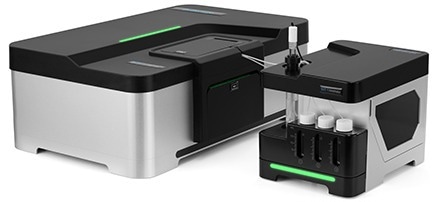
Image Credit: Bettersize Instruments Ltd.